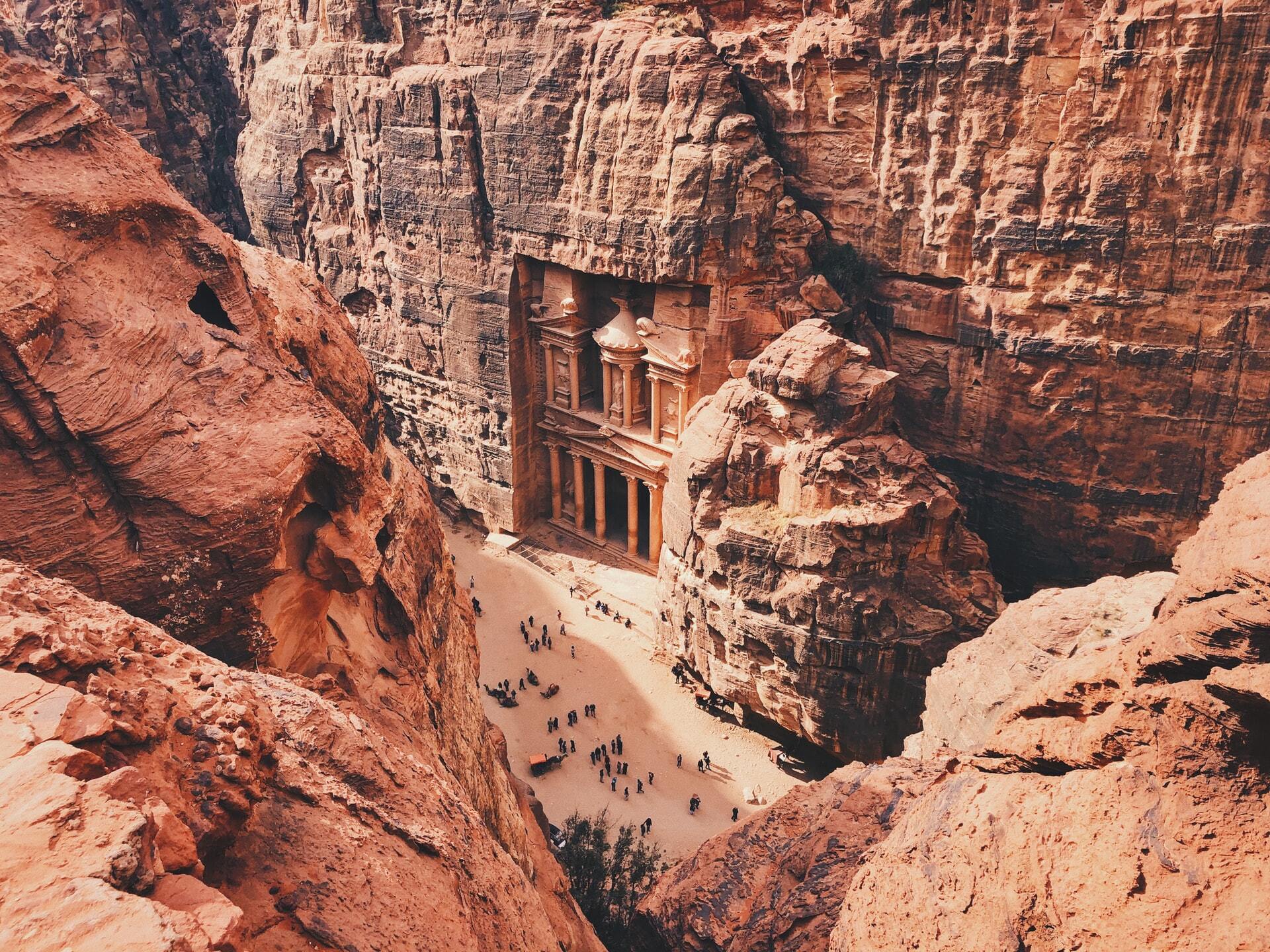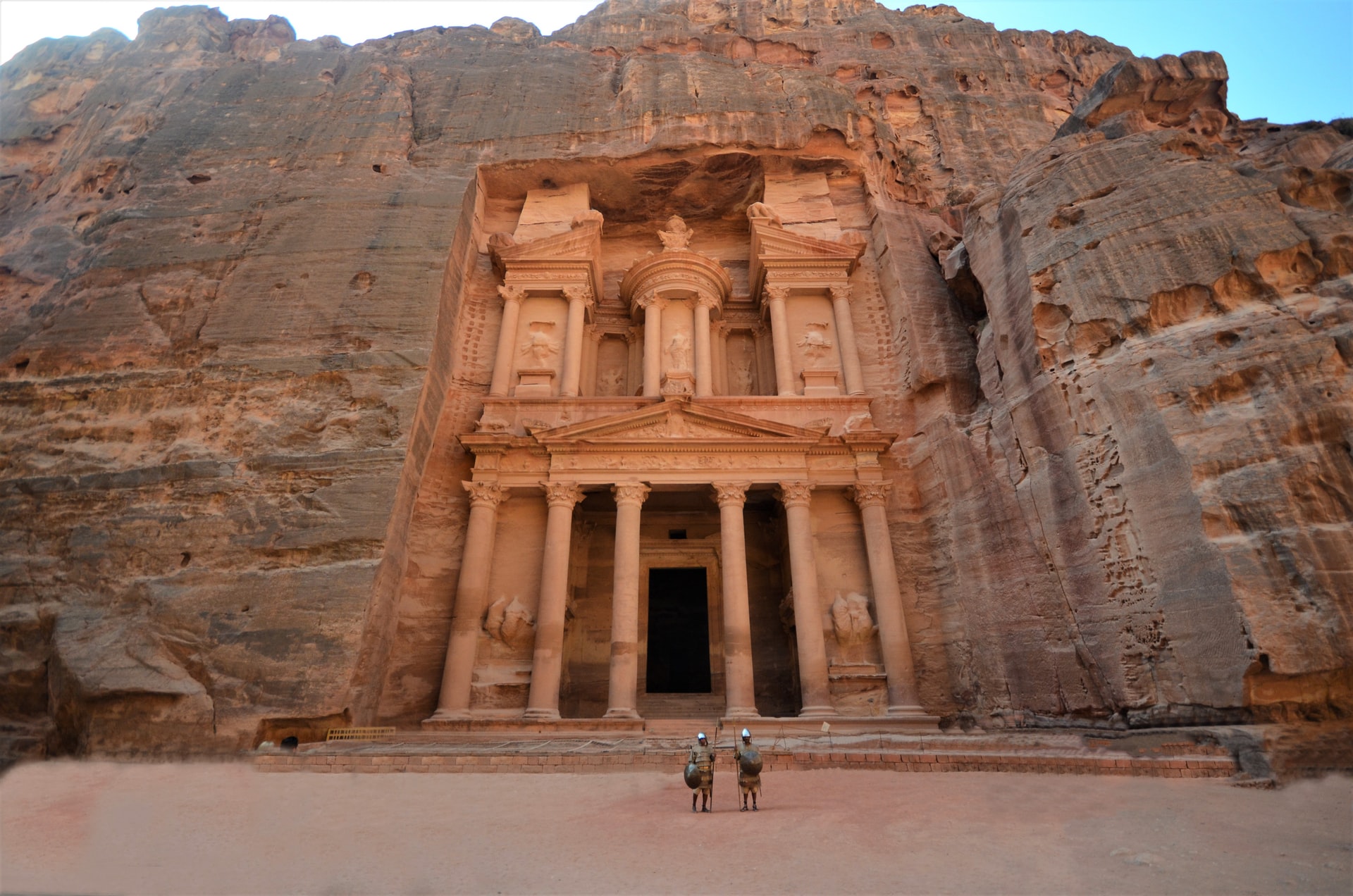ISABEL RUBIO ARROYO | Tungsteno
Nestled between gigantic canyons, Petra became a very rich and powerful city bustling with life, lush gardens, ornate houses and markets overflowing with exotic goods from India, Arabia and Egypt. This iconic site, which was once home to up to 20,000 people and has survived for more than two millennia, was carved directly into the rock in the middle of the desert in what is now Jordan. After investigating the construction of the Roman Colosseum and the Great Wall of China, we now look at how another of the seven wonders of the modern world was built.
Giant steps to avoid accidents
The Nabataeans, a group of Arabian nomads, constructed Petra between the 1st century BC and the 2nd century AD. Before settling here, these merchants moved from place to place with their camels, sheep and goats. Over time, they gained control of the main trade routes along which spices and incense flowed from Arabia to Egypt and the Mediterranean Sea. Despite Petra's strategic location, it remains a mystery to this day why the Nabataeans would abandon their goatskin tents to build the great houses and monuments that make up this city.
Through 3D laser scanning, some historians have determined that giant steps were cut into the mountain to erect these structures. This way, it was not necessary for workers to be hanging by ropes or dangling dangerously off cliff faces. "They wanted to make sure the masons were safe because these people were very skilled and there weren't many of them—nobody wanted them to die moving things," structural engineer Steve Burrows, who has worked on landmark projects such as Beijing's National Stadium—commonly known as the "bird's nest"— tells BBC Science Focus.
Petra became a very rich and powerful city due to trade in exotic goods from India, Arabia and Egypt. Credit: BBC.
A city carved into sandstone walls
Petra is replete with tombs, monuments, temples, amphitheatres and houses carved into enormous sandstone walls. The design of the massive columns, staircases and classical statues show the influence of contact with Greece and Rome. These structures were hand-chiselled into the pinkish-red rocks and then covered with stucco and painted with bright colours.
Sandstone from some quarries was also used. If almost the entire landscape of Petra is filled with this type of rock, why were some sites selected for quarrying and not others? This decision was influenced by factors such as distance from the structure to be built, geomorphology, landscape, and the quality and size of the blocks, as Shaher M. Rababeh explains in his book How Petra was Built: An analysis of the construction techniques of the Nabataean freestanding buildings and rock-cut monuments in Petra, Jordan.
Moving large blocks of stone in a mountainous landscape can be quite an odyssey and it is not entirely clear what methods the Nabataeans employed to do so. Some historians believe that the blocks were probably cut to size at the quarry and then moved on sledges. In addition to sandstone, some white and greyish marble—imported from outside the region—granite columns and wood were also used. Researchers believe that the Nabataeans used wood to stabilise masonry walls against earthquakes, to support roof structures, and to build scaffolding and formwork for arches and vaults.

Petra is replete with tombs, monuments, temples, amphitheatres and houses carved into huge sandstone walls. Credit: Unsplash.
Rock-hewn canals and underground pipes
It is also possible that these structures were somehow protected from the rain, according to Burrows. "It only rains for a short period of time [each year], but very violently. So, what happens with sand and rain? The sand washes away!" he exclaims. The water that fell during these periods not only did not damage the structures of this city, but was used for the rest of the year thanks to the construction of "huge bodies of water in the desert."
The Nabataeans found a way to collect and store this precious liquid in the middle of the desert by means of watertight holes or cisterns. Hidden underground, these cisterns kept the water safe from both evaporation and enemies. A sophisticated system of rock-hewn canals and underground pipes carried water from these seasonal streams and other permanent springs to keep crops fertile and gardens well-watered.
Not only did rainwater not harm Petra's structures, but it was meant to be harnessed for the rest of the year. Credit: Unsplash.
Under the Nabataeans, Petra expanded as trade flourished. Merchants from all over the world passed through the city, leaving behind new ideas and some of the cultural styles of places such as Egypt, China and Greece. However, Petra was not simply a trading centre, it also became a cultural centre.
Over the centuries, Petra passed first to the Romans and then to the Byzantine Empire. But from the 6th century AD onwards, changing trade routes and earthquakes in the area led to the eventual abandonment of the iconic city. Even its location was forgotten. Then, in 1812, it was rediscovered by the Swiss explorer Johann Ludwig Burckhardt. Since then, as well as being the setting for many legends and fictional stories, it has attracted the interest of architects, scholars and tourists from all over the world. Named a UNESCO World Heritage Site in 1985, it has become one of the world's most famous archaeological treasures.
· — —
Tungsteno is a journalism laboratory to scan the essence of innovation. Devised by Materia Publicaciones Científicas for Sacyr’s blog.
